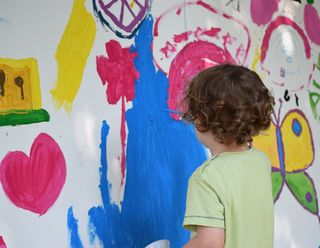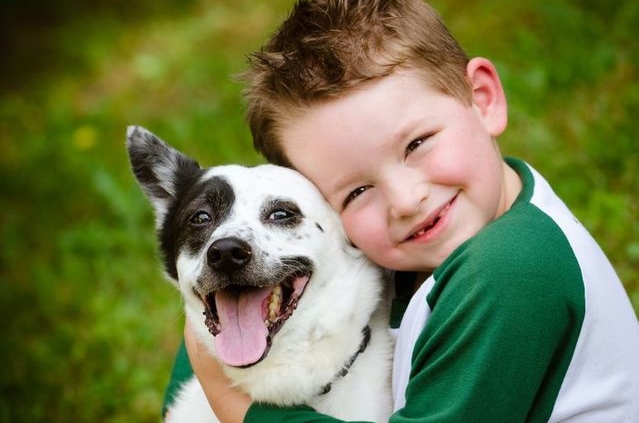Support, Nurture & Love: Talking to Children About Pet Loss
Experiencing the death of a pet can be incredibly painful, especially as more and more households consider pets to be members of the family. Pet loss still holds common cultural stigma, or societal judgement, which can make grieving for our pets more complex. We are also faced with having to make extremely difficult decisions on their behalf, commonly increasing guilt, and making it easy to second guess ourselves.
When a pet passes, whether through old age, disease process, or in a more tragic manner, the entire family is impacted. Many pet parents struggle in how to talk to their children about the death of their pet, using terms like “they went to sleep” or “they are in a better place” in an attempt to buffer their children’s experience of death.
These strategies will help your family support, rather than avoid, the painful experiences and emotion children face with the death of a pet. Although difficult, teaching your child effective ways to cope, grieve, and process through their loss can build a healthy approach to facing death for the rest of their lives.
Don’t Sugar-Coat Death

Placing the word death and child together is one of the hardest and scariest combinations for many parents. We hope, pray, and wish to protect children from the harsher realities of life for as long as possible, which makes it extremely intimating to know what to say and how to say it when it comes to experiencing pet loss.
Commonly, parents use terms such as “they went to sleep” which can actually produce a fear-oriented response for many children. Suddenly, a child is afraid of going to sleep and refusing nap time as they are afraid they might leave and never come back, like the pet.
It’s important, using age appropriate language, to talk about the finality of death using proper words and discussion. Saying “they went to a better place” can leave children looking intently to find them at grandma’s house or the park.
Instead, support them in conversation about final goodbyes and sharing our pets memories, as discussed below. Doing so can naturally lead to more in-depth conversations about death, so be prepared to be open and honest with your child.
Death Doesn’t Have To Be Negative
One of the first experiences with death many children have is associated with a pet. Whether this is a mouse, toad, fish, rat, gerbil, hamster, bird, snail, slug, cat, or dog, the impact of death and its permanence is something that every child must eventually face.
Although death is painful and hard, endings do not have to be approached as a negative or scary experience. As parents portray gratitude for experiences shared together, and discussing positive memories in how a child’s life was changed by the impact of their pet, we grow a sense of respect for death which can lead to gratitude for life, even at a young age.
Exploring books such as The Bug Cemetery By Francis Hill, we can start reducing the unconscious impact of death and dying and teach our children healthier approaches to grief when they face a loss in their lives. Yes, you can even start over the death of a bug.
Give Children The Choice To Be Present
It’s hard to know whether or not to have a child present during a euthanasia experience with the family dog, cat, or horse. In order to protect our children from pain, many parents automatically decide that it is within their child’s best interest to not be present.
 Some families euthanize their family pet with the best intention when the child is away at school, to have the child return home to find their pet is gone. Doing so can actually have the exact opposite effect from the one we intended. Goodbyes are extremely important for every member of the family, especially children.
Some families euthanize their family pet with the best intention when the child is away at school, to have the child return home to find their pet is gone. Doing so can actually have the exact opposite effect from the one we intended. Goodbyes are extremely important for every member of the family, especially children.Having age-appropriate discussion with your children about euthanasia and suffering, as well as what the process looks like can be helpful for a child to understand the “mystery” surrounding death and the family pet. Integrate your veterinarian into the discussion if possible to answer any questions your child may have.
Children can be more resilient than we give them credit for, so allowing them the choice to be present or absent can help a child foster their own coping abilities in the face of pain at a young age. Additionally, giving your child a voice allows them to feel a part of the decision-making and can give back some feeling of control in what can feel like a helpless and overwhelming situation.
There are times, of course, that it may be inappropriate to bring your child to a euthanasia appointment. If the experience would cause an overwhelming negative impact for your child, such as if there’s traumatic physical damage to your pet that cannot be covered, it may be better to support your child in another room.
There are even children oriented books about animal euthanasia, such as When You Have to Say Goodbye: Loving and Letting Go of Your Pet By Monica Mansfield and Lennie Peterson.
Allow Children to Express Without Words

Children commonly cope with their feelings not with words but through arts and crafts. A child may be able to paint a picture that expresses their emotion, allowing them an outlet. Giving your child this opportunity can be one of the most helpful decisions you can make.
Talk to your child about what their picture may represent and what emotions they are feeling. It can also be helpful to ask where in their body they are feeling the emotions, to gain a better sense of how your child reacts emotionally and where it manifests.
Help your child to write a letter or poem. Finger paint alongside them with your own emotion and show them that adults, especially parents, have feelings as well. Teach them that it is important to grieve, healthy to experience their emotions and that it is perfectly normal to grieve the loss of a pet.
After death, help your child make a shadow box with your pets collar and a favorite picture. Take the favorite walk you used to do as a family with your pet before their death and talk about the beautiful memories shared. Also talk about the pain of loss, and how the family will move through it together. Remind your child that a pet is never forgotten, just as they will never be forgotten, and begin to teach them the safety and security in true, loving relationships.
Adam Clark, LSW, AASW is a published writer, educator, and adjunct professor at the University of Denver’s Graduate School of Social Work. Adam focuses his work on the psychology behind the human-animal bond, specializing in endings and transitions. He is passionate about reducing the cultural stigma associated with pet loss, supporting pet owners, and educating veterinary professionals. Additional information on Adam and his current projects can be found at www.lovelosstransition.com, or he can best be reached at adam@lovelosstransition.com.




